So, Mylan has announced that they “care,” and they’re going to help us all out by increasing the value of their savings cards from $100 to $300 per 2pack of EpiPens. They’re also expanding eligibility for their assistance program (how many people even knew they had an assistance program???)
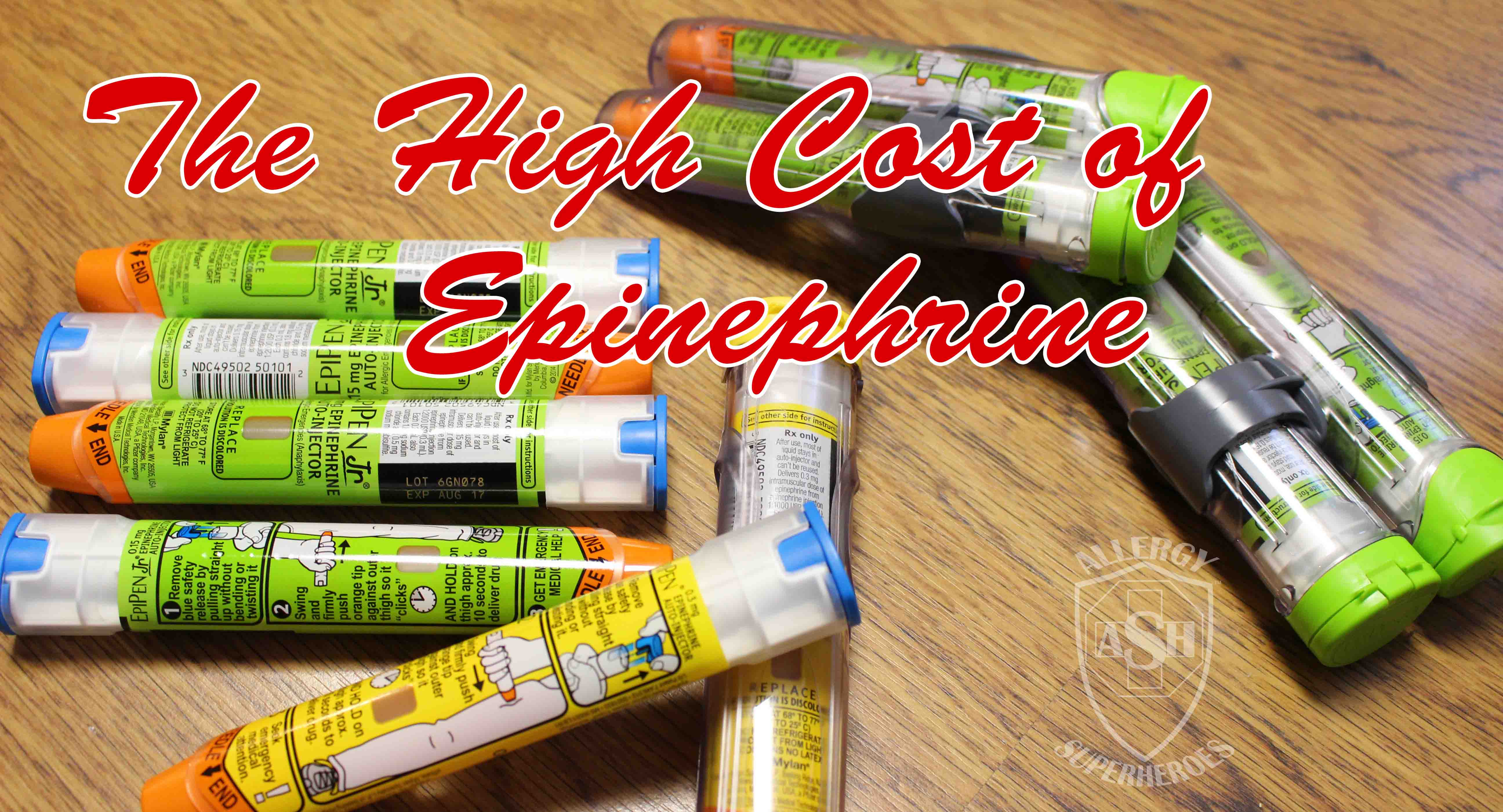
While these assistance programs will help people to some degree, I have a problem with the fact that they aren’t touching the retail price of the drug. They’re keeping the supposed “value” of the drug sky-high, while placing us all at the mercy of their goodwill–something we know they’re lacking or they wouldn’t have jacked the price up so high in the first place. As soon as the firestorm dies down, they will be free to cut the value of the savings cards again and their profits will only have been hampered a little bit.
I’ve had food allergies my whole life, and I’ve been carrying epinephrine since 1985. It hasn’t always been EpiPen, we had a couple of different types over the years, but we’ve always had epinephrine.
I looked back through my personal medical records, and I have EpiPen prescription records on hand dating back to 2007 (I must’ve shredded earlier ones.) Here are pictures of the pen retail prices in all that time. (I’m missing a few years, and I haven’t filled my own yet for 2016.)
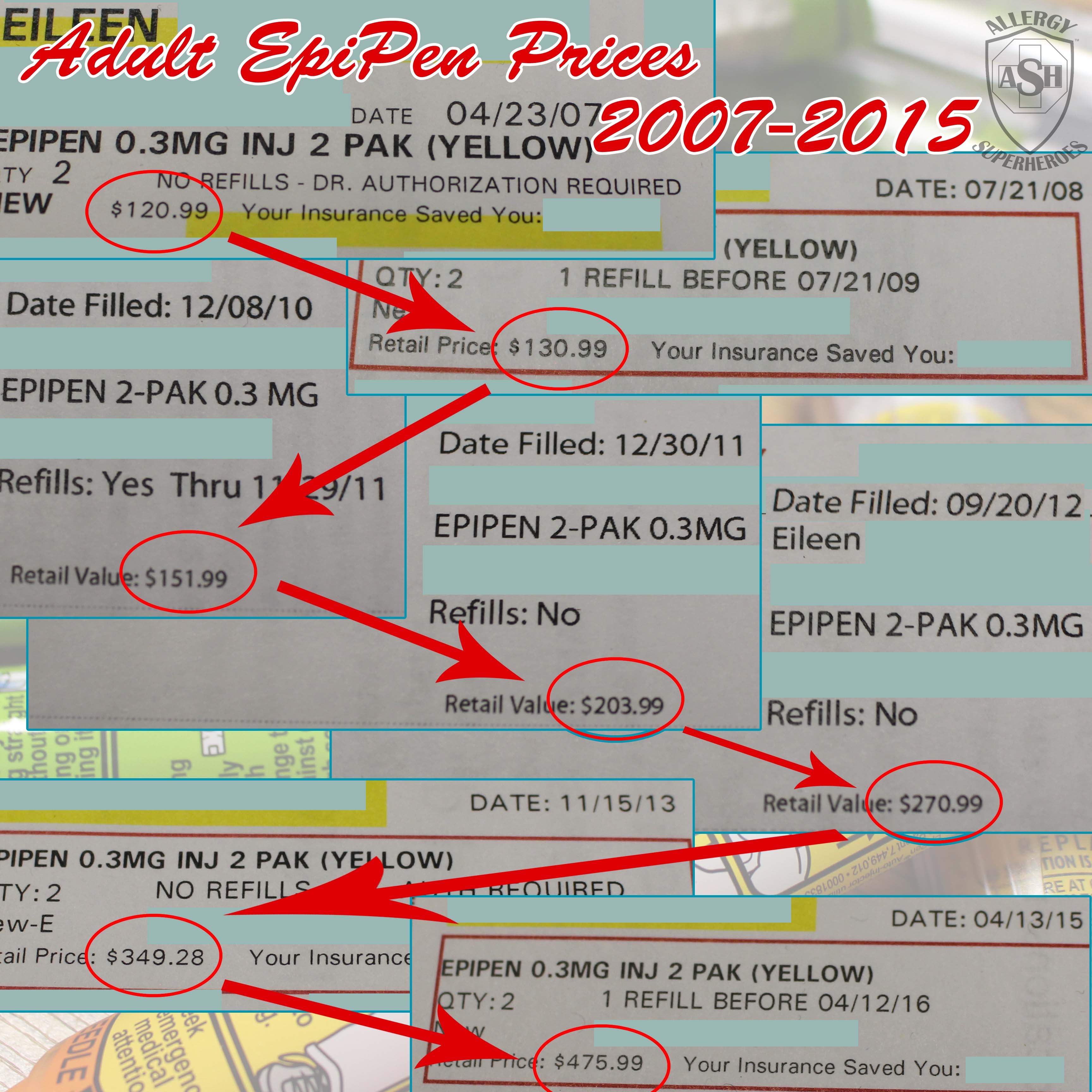
Zax was diagnosed with food allergies in 2009, so here are his prescription records for every year since that time. The scripts where I divide by two is when I filled two packs at once for school. (Interestingly, it went down briefly for 2011, but then jumped again.) I find it interesting that the adult and pediatric doses do not cost the same.
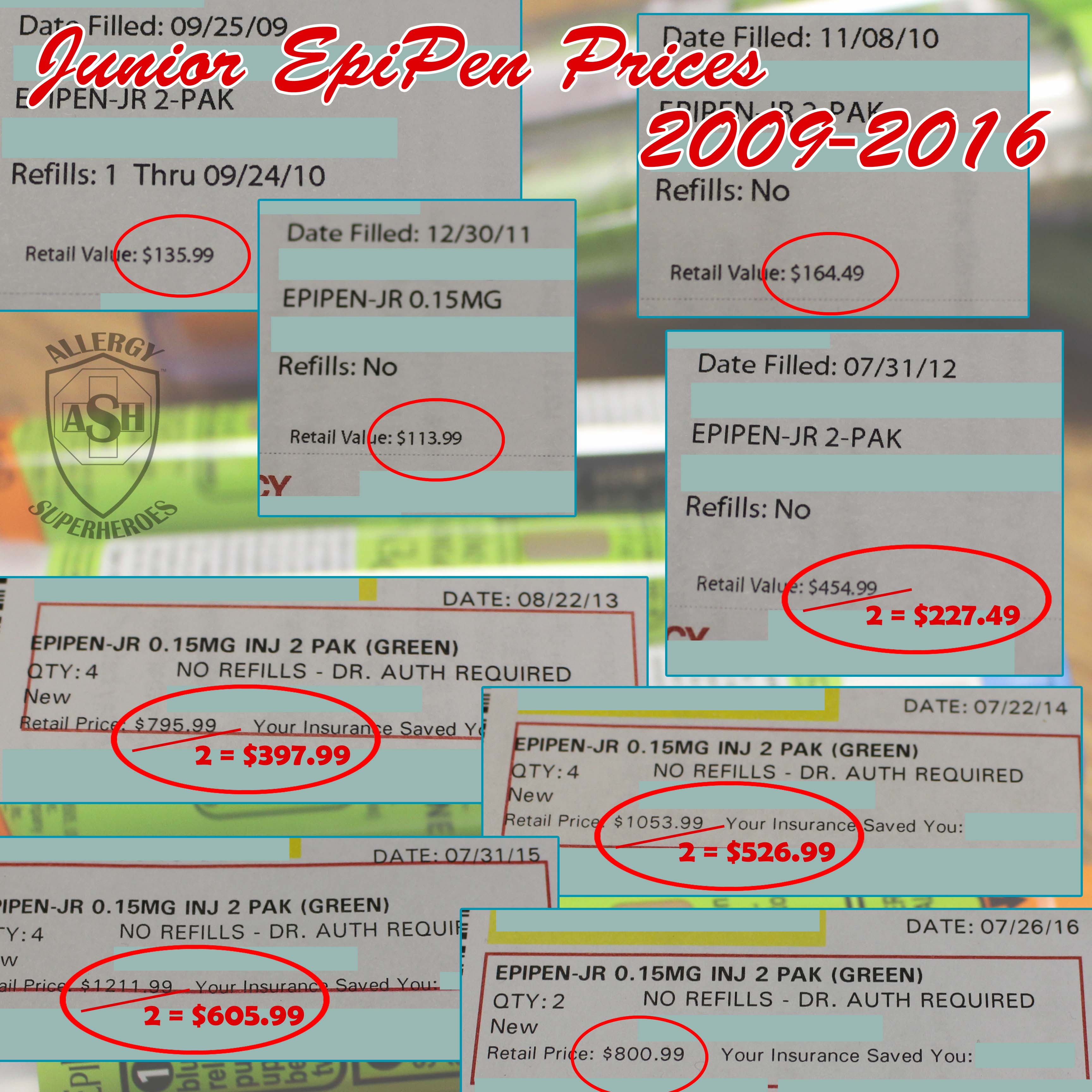
I also have a spreadsheet with medical information and prescription records that dates back to 2002, but the low and even numbers I paid prior to 2007 indicate that my copay was always lower than retail price. (Note: Mylan acquired EpiPen in 2007.)
I’ve also heard my parents complain about needing to get rid of old paperwork that has just sat in boxes in their basement. I recently asked them if they could look to see if they have any of the EpiPen prescriptions from my childhood. This is what they found:
This is from 1990, but it wasn’t for an EpiPen. This script was for an Ana-Kit, a preloaded syringe that had two doses of epinephrine inside. You would inject the first dose until the plunger stopped, and then if necessary, twist the device and inject the second dose. I don’t know when these went off the market. The retail price was either a bare $3, or that was our copay (prescription records didn’t always tell you the retail price.)

This prescription is from 1995. We paid $66.89 for this EpiPen from my teen years. Please note that this would have been for a single pen, the two-packs didn’t become standard until the early 2000s. I’m assuming that since the price was not an even number, that this was not a copay but the full price. If we double it for a two-pack, then the price would have been almost the same as I paid in 2007. (This would have been more than a decade before Mylan acquired the EpiPen.)
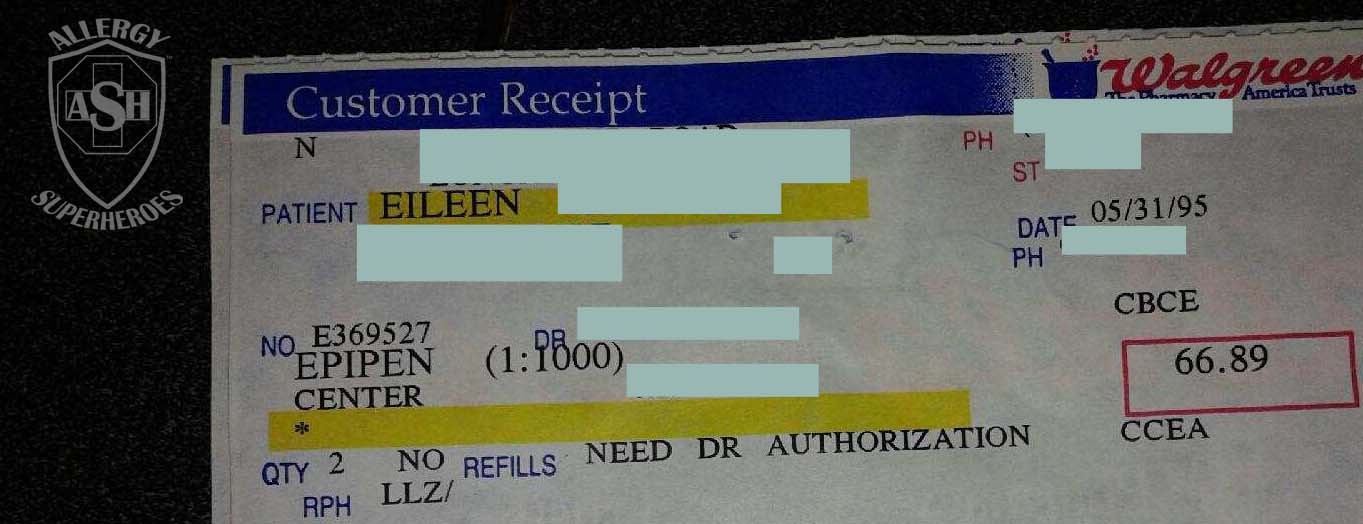
Any drug company should expect to make a profit off their products, of course. That’s how commerce works. You buy it yourself, package it in a way that your customers will like, and sell it for more in order to pay yourself for your time, effort, and to make a living. You also have additional costs, like marketing, that need to be accommodated. When you have a small business like Allergy Superheroes, it can be hard to find the right price point to make a decent profit off your products and still keep the price low enough to attract customers. Mylan, on the other hand, is at the opposite end of this spectrum. With the downfall of Sanofi’s Auvi-Q last year, that left Mylan in a monopoly position (they had greater than 90% of the market share anyway, and now they have no decent competition) and they are clearly taking advantage of that.
Mylan likes to blame the cost of the EpiPen on other parts of the supply chain, but I’m not buying it and I don’t think most of you are either. Yes, all those entities take their cut, but they took a cut when Epis were cheap, too. They take a cut of all prescription drugs: those that cost $10 and those that cost $2,000 alike. It’s a percentage deal, not a “you must pay us $300 for every prescription” situation.
Another problem with the price is Canada. Canada obviously has government programs regulating the cost of drugs, because I’ve heard numerous accounts that EpiPens cost roughly $120 in Canada, and even that you can buy them over-the-counter. And yet, Mylan hasn’t pulled out of the Canadian market. If they can afford to only charge $120 OTC in Canada, they could charge a similar price here. It won’t break them.
They aren’t spending the money on research and development, either. EpiPen has been redesigned once in the 30 years I’ve carried one. It was a good redesign, but it’s not like they’re actively making it better, smaller, longer-lasting, or more pocket-friendly for us. Even if they were to redesign it again, such changes probably wouldn’t justify the increased costs–but they would be easier to swallow if we knew a portion of it was going towards making the device friendlier.
News stories are popping up everywhere about the hardships that EpiPen prices are causing people. The costs are especially burdensome when you consider that many families need more than one set per year. In our house, for example, we get five sets. One adult set is for me, which follows me around in my purse. Each of the boys gets two sets–one for my purse (it comes out of the purse to follow them around if they go somewhere without us–to the grandparents, for example) and one set for school. Technically I could share a set for the boys at home–but if they happen to eat peanut at the same time, we might be screwed if I did. So we buy the five sets.
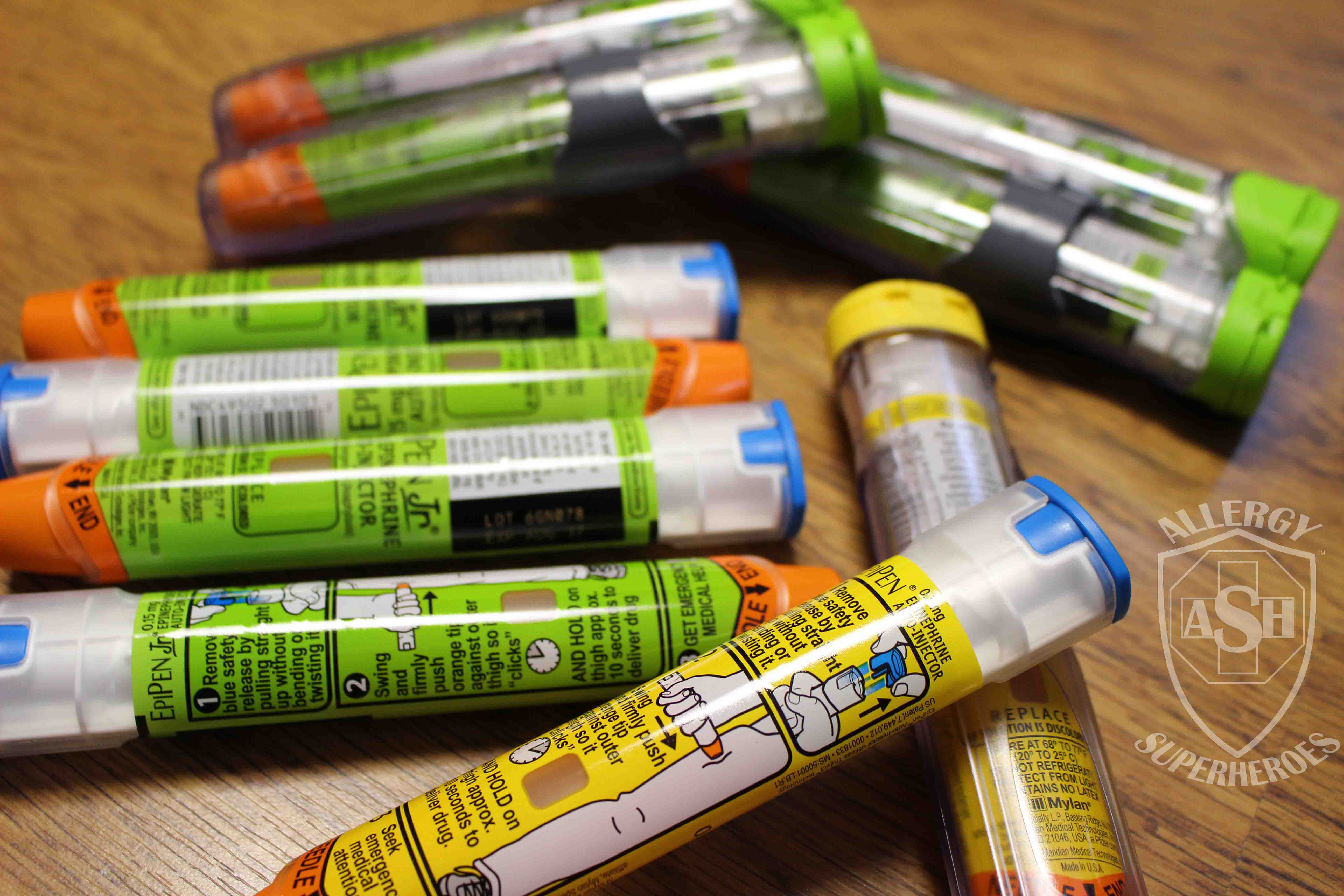
Depending on how generous (or not) your insurance is, these pens could have a manageable price tag, or they could break you.
One of my concerns about Mylan’s “solution” to the price gouging is that there is no mention (so far) of compensation to people who have already paid for their pens this year–or in the past few years, for that matter. Will they offer rebates for 2016 purchases? Much of the country has already started school, and that means filling scripts for the school set of pens for kids, at the very least. I would guess that summer is probably the biggest purchase season for EpiPens. Will they help there?
A few years back, Mylan came out with their “$0 copay cards/coupons.” This coupon offered you $100 off the cost of your prescription–so Mylan absorbed $100 of your out-of-pocket costs. Everyone was sharing these and talking about the generosity of Mylan at the time that they debuted, saying how “nice” it was that Mylan was giving back.
The problem with these cards is that they are truly misbranded. They only result in a $0 copay if your copay is $100 or less. Insurance has been getting less generous lately as well, so more people than ever this year still can’t afford epinephrine even with $100 off. And as I’ve already heard quite a bit online in just one day, even $300 off is still going to result in hefty out-of-pocket sums for many people, especially those with high deductibles.
When Mylan acquired EpiPen back in 2007, they transformed the drug from a simple device that we carried with us for emergencies, to Your Best Friend and Lifesaving Companion That You Absolutely Must Have Two Of At All Times!
Granted, this has helped a fair bit when it comes to food allergy awareness, not only for the general public but it also aligns with current doctor recommendations: you need two in case one doesn’t work or your symptoms return before EMTs do, and you don’t want to wait until things get terrible before using it–you want to use it early on for a better outcome. However, their multi-million dollar advertising campaign is a lot of money spent making sure that people think of EpiPen and only EpiPen for anaphylaxis, and is ironic considering that they’ve seldom had anybody to really compete with. (Sanofi was their best competitor, but as we all know the Auvi-Q was recalled last year and didn’t take too big of a chunk out of their market share anyway–probably because their opening cost was just as high as the EpiPen. Now, if the better-designed competitor had also been significantly cheaper, I would expect that they also would have taken a bigger share.)
Some extra things your EpiPens are paying for:
EpiPen cases
I know many of you have “registered” your epipens to take advantage of the free carrying cases Mylan offers. We have not, and that is because we know of several companies that are trying to make a living off of epi carrying cases and other allergy products. (Allergy Superheroes even hopes to offer cases at some point in the future.) These companies are all small-scale operations, usually run by families touched personally by food allergies. Then the giant Mylan comes along and offers the same product those companies sell for free, because they can, because their profit margin on the pens they sell is huge. Those free epipen cases hurt small businesses, so we will not use them. (I know it’s easy to say “I’ve paid for it, I may as well take it,” but on principle we can’t bring ourselves to take them.)
Stock EpiPens in schools and some public places
I thought it was cool the first time I discovered that Mylan was offering free Epis to schools–after all, they could certainly afford it. And on the whole, that is an excellent program to offer. But we are the ones paying for it, in our inflated Epi prices. Every public school in the nation probably has a handful of emergency kits with EpiPens in it, and only a small number of them have stock epis in the nurse’s office. I will never argue that stock epi is a bad thing, but there’s something wrong when some schools will enroll students who cannot afford to have their own Epi on campus–and most of those students will not be protected by a stock pen.
The $0 Copay cards
You didn’t think Mylan was offering $100/$300 off their Pens out of the goodness of their hearts, did you? Those didn’t come about until they’d raised the price to the point where people needed them–and to the point where Mylan could comfortably offer this “discount” without losing anything that they hadn’t built into their inflated budget.
Mylan’s advertising budget
Which includes paid celebrity endorsements, paid trips for bloggers to locations like Disneyland, and commercials designed to make kids anxious and scare us all into buying even more pens. Yes, every company has an advertising budget, but perhaps Mylan is going too far. (In fact, it’s a little hard to write about this, as part of me had hoped that Mylan would pay me to write a blog post and send my family to Disney next time. But now I don’t think I could accept. In fact, I now wonder if the blogger retreat in May 2015 was a preemptive attempt to garner goodwill among some of the most vocal voices in the food allergy community, to stave off public outrage. I specifically remember reading that they “justified” the prices as “out of their hands” to those bloggers.)
Note: Both Sarah Jessica Parker and Kelly Rudnicki (of foodallergymama.com) have dissolved their paid spokesperson relationships with Mylan over this issue.
One can’t help but wonder if Mylan debuted all of their “generous” practices in the last few years with the intention of distracting consumers from their dramatic price hikes. “Look at how great and generous this company is” we are all made to think, all while they are using our goodwill to keep us from thinking about how much money they are pocketing for themselves. The $100 savings card has been around for at least three years, but (from our records, anyway) the pen prices have gone up by more than $400 in the last three years–so they’ve more than made up for the “loss” they would have taken from using the cards that first year.
Like many others, I think it’s time for regulation in this industry. The EpiPen is a device that most people never want to need, but everyone wants to have on hand “just in case.” It’s like a seat belt: you always need to have it on even though you don’t expect an accident. Most of these devices go unused by the end of the year. But regardless of the “waste,” it is a necessary, life-saving medication. And people shouldn’t have to choose between being ready to save a life, and having a place to live.
The moral of the story is that we all need to keep making a fuss. By raising our voices, we made a pharmaceutical giant triple the value of their “discounts.” If we quiet down now and accept the tidbit that they’ve thrown to us, they will smirk and be content that the masses have been distracted once again. If we want to see real progress, if we want Mylan to reveal how much the injector device actually costs them, if we want to fight until they are forced to drop the retail price back into the $100-$200 range, then we have to keep raising our voices. So please, keep sharing your stories and making waves. We have power together!



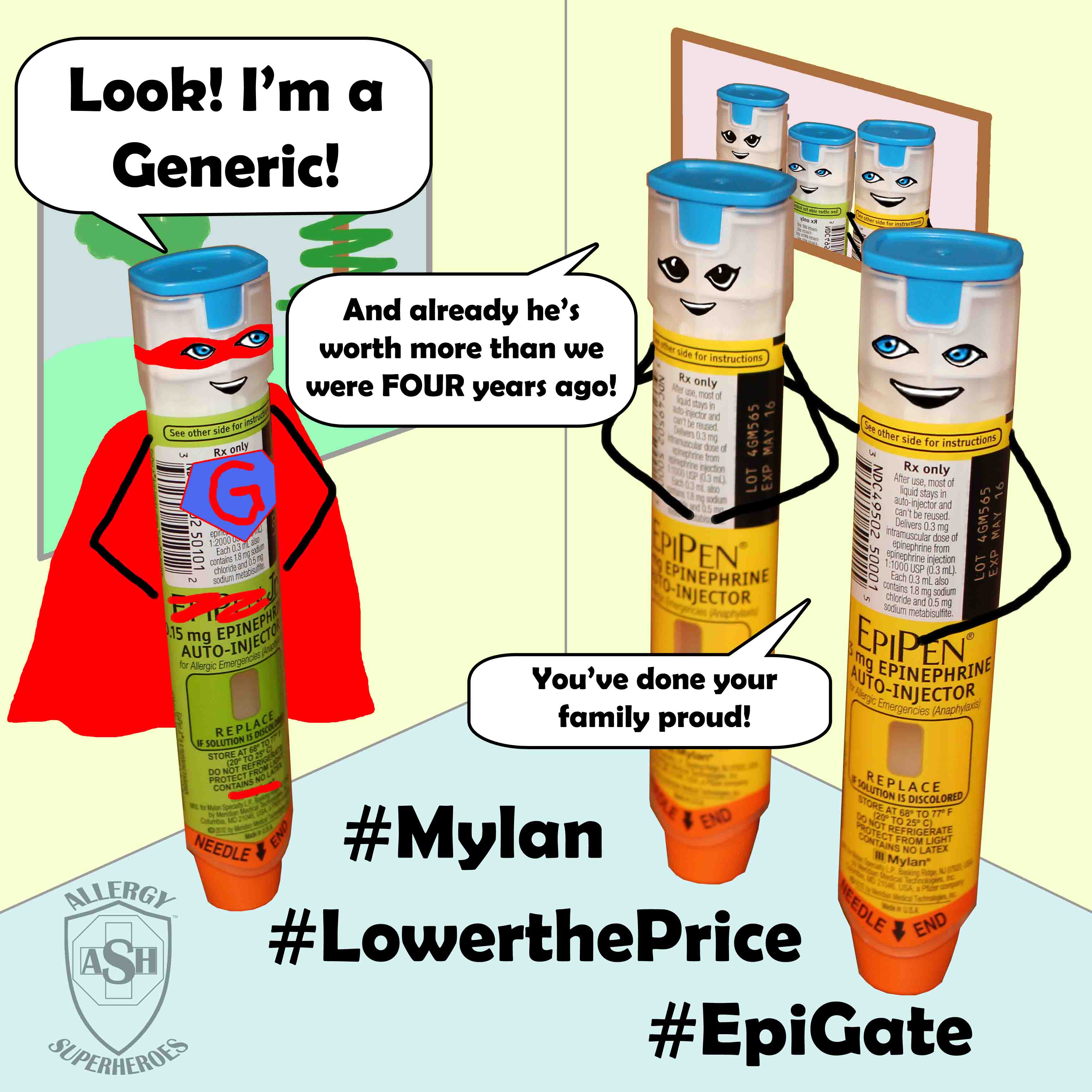

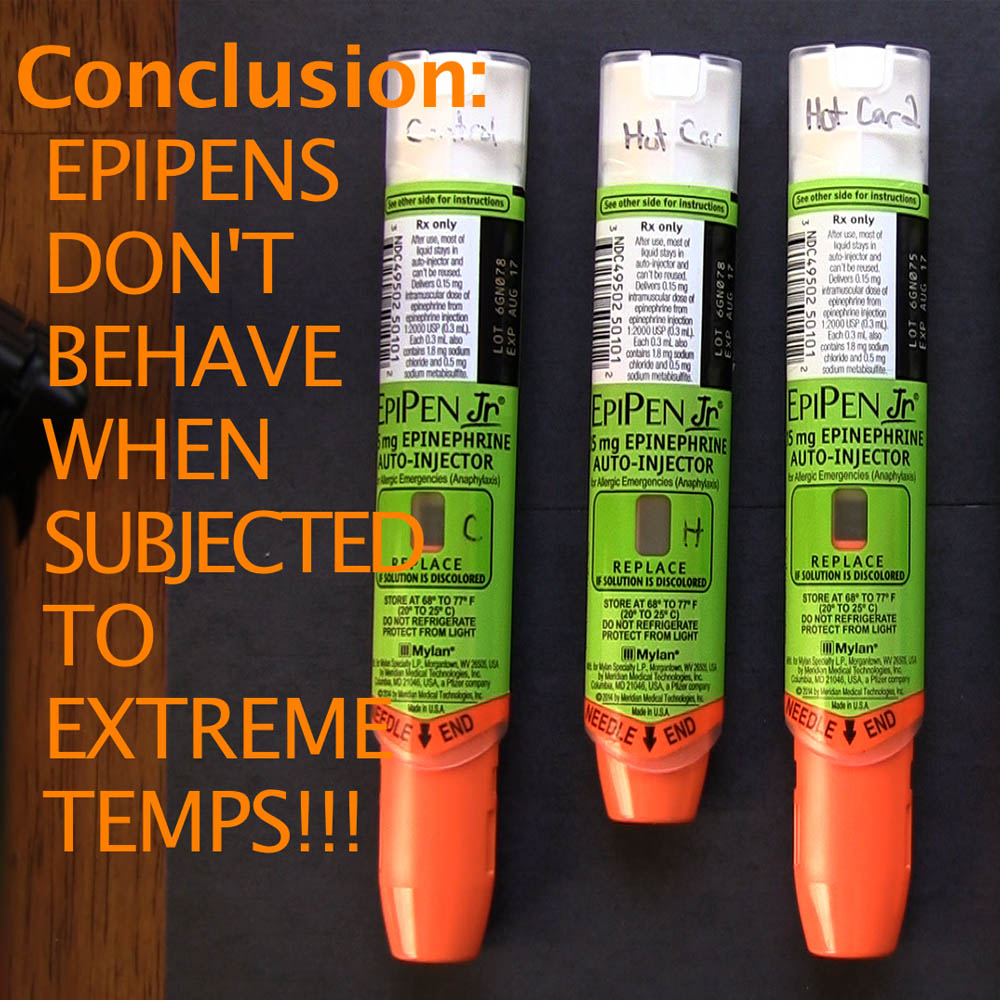
There have been 3 other auto injectors other than EpiPen in the last 10 years and they have come and gone for various reasons. And currently a generic on the market that is still $400. No one balked at the $500 Auviq cost last year…EpiPen has been the only constant auto injector. Shouldn’t that count for something..don’t agree with the significant price increase and empathize for those with high deductibles (egg allergy and we have great insurance and pay $0) health care system is broke..
Their being constant does count for something, but doesn’t give them permission to gouge. And I’ve been hearing equally bad things about the FDA throwing roadblocks at most of their upcoming competition, especially a genuine generic. Definitely a broken system.
The media and people only talk about the bad things in this world most of the time. Has anyone looked into why Mylan has the EpiPen for Schools? a little girl died from her exposed allergen at school. I wish people would just do a little fact finding and not rely on the media for everything. And people should look up any other ceo of pharma or device salary..some will blow your minds.
Thanks for your blog! I love reading it!